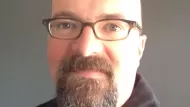I'm writing from Cambridge, where the Lincoln Institute of Land Policy and the Harvard Graduate School of Design are hosting their annual shindig for a small crew of journalists crazy enough to have urban issues as their beat.
I'm writing from Cambridge, where the Lincoln Institute of Land Policy and the Harvard Graduate School of Design are hosting their annual shindig for a small crew of journalists crazy enough to have urban issues as their beat.
Last year, the focus was decidedly on the journalists themselves. The newspaper business was falling apart, and the future was uncertain. This year, TIME magazine editor Rick Tetzeli set the slightly more optimistic tone for journalism in summarizing his magazine's bold move to plant a reporter in a house in Detroit. "The world of unemployed journalists is an untapped resource," he said. "The big media company is more and more of an anachronism." Tetzeli, with all of his big media clout, saw that the blog they set up for the project told a more interesting, consistent narrative than the stream of articles in TIME's many magazine properties.
Instead of navel-gazing, this year is focused on giving journalists the inspiration and high-level exposure to really dig in to stories about cities and urban planning. Andrés Duany kicked off the day with his usual bravado and razor-sharp analysis. Duany never ceases to amaze with his balance of real-world architecture and planning experience and next-generation thinking. Realizing that the projects he's planning today won't be built for another 5-10 years, he's already imagining they'll need to be ready for possible post-peak oil and global warming conditions. He's got a book coming out on agrarian urbanism in the next couple of months which should be fascinating. "It's not just one thing, it could be THE thing," says Duany. I'm dying to find out (more on Duany's provocative presentation on Monday).
But perhaps no one exemplifies the idea of "The Reinvented City" more then economist Paul Romer, who was the keynote speaker at tonight's dinner. Romer's "Charter City" concept is a dream that is so out there it is highly probable. In a nutshell, Romer is pitching places in the world with unused, unwanted land on creating a city framework outside their jurisdiction.The new "city" would be run remotely, using the Hong Kong model, and the citizens would be invited from all the poor areas of the world to come there and work. Sort of Sweatshop City, without the nationalism. Ingenious, and a little scary. 'Cities are the right interface for experimentation," says Romer. I couldn't agree more.
"The Reinvented City" continues tomorrow, and Mary Newsom (@marynewsom) and I are twittering up a storm. Follow me on Twitter at @halbur, or search hashtag #lincinst.

Trump Administration Could Effectively End Housing Voucher Program
Federal officials are eyeing major cuts to the Section 8 program that helps millions of low-income households pay rent.

Planetizen Federal Action Tracker
A weekly monitor of how Trump’s orders and actions are impacting planners and planning in America.

Ken Jennings Launches Transit Web Series
The Jeopardy champ wants you to ride public transit.

Driving Equity and Clean Air: California Invests in Greener School Transportation
California has awarded $500 million to fund 1,000 zero-emission school buses and chargers for educational agencies as part of its effort to reduce pollution, improve student health, and accelerate the transition to clean transportation.

Congress Moves to End Reconnecting Communities and Related Grants
The House Transportation and Infrastructure Committee moved to rescind funding for the Neighborhood Equity and Access program, which funds highway removals, freeway caps, transit projects, pedestrian infrastructure, and more.

From Throughway to Public Space: Taking Back the American Street
How the Covid-19 pandemic taught us new ways to reclaim city streets from cars.
Urban Design for Planners 1: Software Tools
This six-course series explores essential urban design concepts using open source software and equips planners with the tools they need to participate fully in the urban design process.
Planning for Universal Design
Learn the tools for implementing Universal Design in planning regulations.
Heyer Gruel & Associates PA
Ada County Highway District
Institute for Housing and Urban Development Studies (IHS)
City of Grandview
Harvard GSD Executive Education
Toledo-Lucas County Plan Commissions
Salt Lake City
NYU Wagner Graduate School of Public Service



























